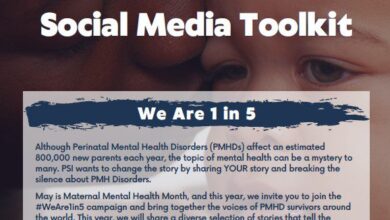How Prenatal Exercise Benefits Your Baby

You may already know some of these There are many benefits of prenatal exercise for you, but did you know that baby also receiving a long list of perks?
In this part, we’ll look at how exercising during pregnancy can make your baby healthier. We will divide it into three parts:
- Benefits of Exercise on Fetal Development
- Benefits of Work Experience Exercise
- Long-Term Benefits (Childhood and Beyond)
1. Benefits of Exercise on Fetal Development
First, it is important to understand that the placenta is a completely new organ that grows during pregnancy that provides the fetus with all the oxygen and nutrients it needs to grow. During exercise, blood flow is redistributed from organs – such as the placenta – to the working muscles.. For this reason, many years ago, there was concern that prenatal exercise could result decreased delivery of oxygen and nutrients to the fetus.
However, here’s why that’s not the case…
While it is true that the placenta (like other organs) receives less blood flow and nutrients during exercise, it is actually “good stress” that results in greater vascularization, making it better at delivering oxygen and nutrients to the fetuseven while resting.
So, how exercise “stresses” your heart a bit — making your heart healthier and stronger — the same is true for the placenta.
In fact, studies have shown that exercise during pregnancy can contribute to a improvement in placental function through improved ability for nutrient and gas exchange from the placenta to the fetus (Kubler et al., 2022).
Improved placental function can lead to many benefits. Below are some of the other benefits shown to the fetus:
- Healthier birthweight
- Exercise has been shown to reduce the risk of premature or low birth weight babies (5lbs, 8oz or less), as well as babies born with macrosomia (birthweight greater than 8lbs 13oz) (Berkowitz et al., 1983).
- Higher “APGAR” score.
- Exercise is associated with higher newborn APGAR scores (a measure of a baby’s physical condition at birth that takes into account appearance, crying volume, muscle tone, and other physical characteristics) .
- Improved heart health
- Congenital heart defects are one of the most common birth defects, affecting up to 1 in 100 babies. Exercise has been shown to significantly reduce the risk of heart defects (Reynolds, 2015).
2. Benefits of Work Experience Exercise
Just as exercise can help ease labor for you, the same is true for your baby:
- Improved ability to manage the stresses of labor
- Labor can be stressful for babies too! However, babies born to those who exercise during pregnancy are better able to manage the stresses of childbirth, and recover from it more quickly. (Hall & Kaufman, 1986).
- Faster heart rate recovery
- Fetuses exposed to maternal exercise had a faster heart rate recovery to baseline, indicating a more stable cardiovascular system (Roldan-Reoyo et al., 2019). This helps the fetus better manage the changes in heart rate that can occur during labor.
- Better travel through the birth canal
- The baby’s descent into the birth canal involves a complex series of movements, which require the baby to communicate with body structures to know when to make what movement. When the baby’s head touches the pelvic floor, this is the signal to begin a final cycle that results in expulsion through the pelvis. If you have more”responsive” pelvic floor muscles – soft muscles, still strong – this helps ease your child’s exit. Check out the tips at the end of this post that will help you develop responsive pelvic floor muscles.
3. Long-Term Benefits (Youth and Beyond)
This is a really fascinating area, as more research continues to look at the long-term effects of prenatal exercise on the fetus. Literally, 9 months can have a forever effect. Here are just a few of the benefits that have been demonstrated so far:
- Improved cardiorespiratory health
- Research has shown that improved levels of cardiorespiratory fitness are evident at birth extends to childhood (Clapp & Little, 1995).
- Greater motor coordination is possible
- A study from 2019 showed potentially greater motor coordination for one-month-old babies born to more active mothers (McMillan, et. al, 2019).
- Reduced risk of becoming overweight or obese as a child
- Several long-term studies have shown that babies born to those who exercised regularly during their pregnancy maintained lower levels of fat and weight as children (Moyer, Reoyo, & May, 2016). .
- Potentially improved intelligence, language, and memory
- Long-term studies have shown that babies born to those who exercised during pregnancy scored higher on general intelligence, memory tests, and oral tests than children of not exercising – even after taking into account weight, height, education, parental socioeconomic status. , and several other factors that can influence child development (Reynolds, 2013).
Beyond these incredible benefits for your child, there are so many benefits for YOU. Learn more about the benefits for you in this section at The Surprising Benefits of Prenatal Exercise.
Reaping the Benefits: How to Get Started
For safe and effective workouts that will help you prepare your body — especially your deep core and pelvic floor — for pregnancy and birth, explore our prenatal self-guided training programs. For more personalized support, consider working with one of our experts PROnatal Personal Trainer.
If you are a health and fitness professional interested in learning how to coach pre and postnatal clients, explore our Pre & Postnatal Professional Education. We offer a variety of courses tailored to different learning needs.
Sources:
ACOG Committee Opinion number 804. Physical Activity and Exercise During Pregnancy and the Postpartum Period. April 2020.
Berkowitz, GS, JL Kelsey, TR Holford, and RL Berkowitz. (1983). Physical Activity and the Risk of Spontaneous Preterm Delivery. Journal of Reproductive Medicine. 28, 581-588.
Clapp, JF (2002). Exercising During Your Pregnancy. Omaha, NE. Addicus Books.
Cram, C., and G. Hyatt. (2003). Prenatal and Postpartum Exercise Design. Tucson: Human Kinetics, Print.
Hall, DC and Kaufmann, DA (1986). Effects of Aerobic and Strength Conditioning on Pregnancy Outcomes. American Journal of Obstetrics and Gynecology (November).
Kubler, JM, Clifton, VL, Moholdt, T., Beetham, KS (2022). The effects of exercise during pregnancy on placental composition: A systematic review and meta-analysis. Placenta117, 39-46.
May, LE, Glaros, A, Yeh, HW, Clapp, JF III, Gustafson, KM (2010). Aerobic exercise during pregnancy influences fetal cardiac autonomic control of heart rate and heart rate variability. Early Hum Dev. 86(4):213–217.
McMillan, AG, Mayo, LE, Gaines, GG, Isler, C., & Kuehn, D. (2019). Effects of Aerobic Exercise in Pregnancy on 1 Month Infant Neuromotor Skills. Med Sci Sports Exerc. 51(8),1671-1676.
Moyer, C., Reoyo, O., & May, L. (2016). The Influence of Prenatal Exercise on Children’s Health: A Review. Clin Med Insights Women’s Health. 9, 37-42.
Perales, M., Artal, R., & Lucia, A., (2017). Exercise During Pregnancy. Journal of the American Medical Association. March 21.
Roldan-Reoyo, O., Pelaez, M., May, L., Barakat, R. (2019). Influence of maternal physical exercise on fetal and maternal heart rate responses. German Journal of Exercise and Sport Research. 49, 446–453.
Reynolds, G. (2013). Mother’s Exercise Can Boost Baby’s Brain. The New York Times. Nov 20.
Reynolds, G. (2015). Maternal Exercise May Lower Heart Risks in Newborns. The New York Times. April 8.
Wolfe, LA, Brenner, I., & Mottola, M. (1994). Maternal exercise, fetal well-being, and pregnancy outcome in exercise and sports science reviews. American College of Sports Medicine, 22, 145-194.





